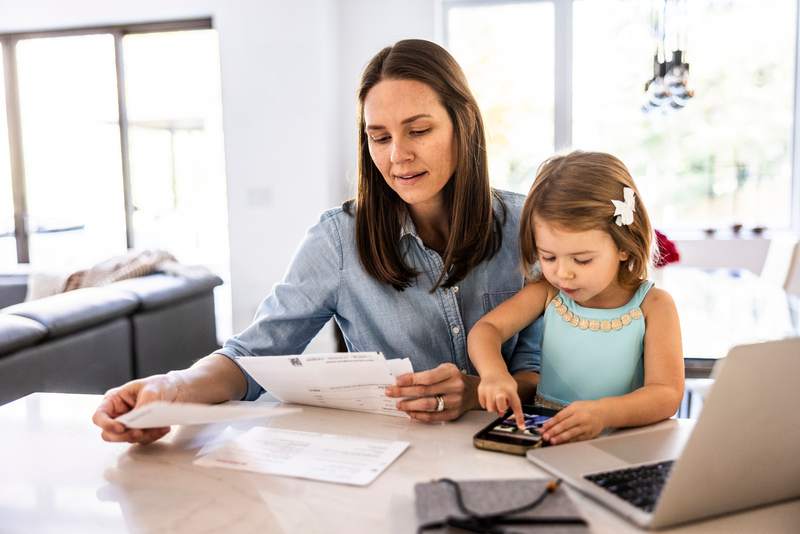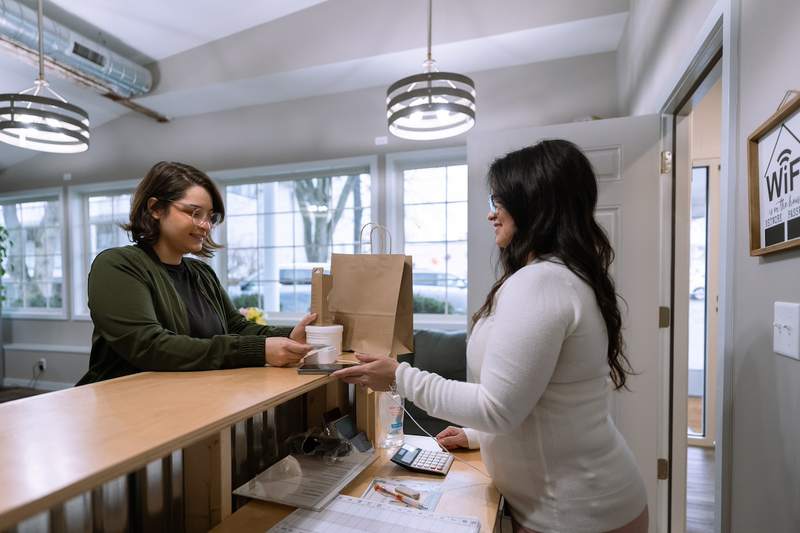Need money to pay off high-interest-rate credit card debt? Maybe your home needs repairs you can’t afford to pay for with cash. Or maybe your car needs a new transmission fast and you’d rather not use a credit card to pay for it.
These are all possible uses of a personal loan. A personal loan is a lump sum of money provided by a bank or other financial institution that features a set repayment schedule.
Let’s learn more about personal loans, what they can be used for and the various types of personal loans available.
Personal Loan Overview
With a personal loan, you receive a lump-sum payment that you pay back over time, usually in monthly installments. You can use the funds from your personal loan to pay for almost anything.
Just make sure your loan payments are on time. If you pay late, you’ll face financial penalties from your lender. And if you pay 30 or more days late, your late payment will show up on your credit reports, which could cause your credit score to fall by 100 points or more.
Be careful, too, of your personal loan’s interest rate. The higher the rate, the higher your monthly payment. If your credit is weak, you might be hit with a higher rate, meaning you’ll pay more over time when repaying your loan. Depending on what you need the money for, you might find a cheaper alternative.
See What You Qualify For
Buy A Home
Discover mortgage options that fit your unique financial needs.

Refinance
Refinance your mortgage to have more money for what matters.
Tap Into Equity
Use your home’s equity and unlock cash to achieve your goals.
Reasons For Using A Personal Loan
A borrower can use a personal loan for almost any reason. Some of the better uses include paying down credit card debt, covering unexpected financial emergencies and funding the cost of a home repair.
Next up, we’ll dive into some of the more common reasons for using a personal loan.
Debt Consolidation
Debt consolidation is one of the most popular uses of personal loans. This isn’t surprising: Many credit cards charge an interest rate of 20% or higher. If you rack up thousands of dollars in credit card debt, these high interest rates can cause the amount you owe to soar each month – and this is where a personal loan can help. You can take out a personal loan and use the cash from it to pay off your high-interest-rate credit card debt. You’d then pay back your personal loan in regular monthly installments.
This is a smart financial move if you can nab a lower interest rate on your personal loan than what you’re paying on your credit card debt. Let’s say your credit card charges you an interest rate of 18.99%. If you qualify for a personal loan with an interest rate of 10.3%, you can save a significant amount in interest by swapping your higher-rate credit card debt with a personal loan.
Just make sure you don’t run up your credit card debt again. Doing so will leave you in even worse financial shape because you’ll now have a personal loan to pay off in addition to your new credit card debt.
Home Improvements
Need to fund repairs or minor improvements to your home but don’t have enough equity to qualify for a home equity loan or cash-out refinance? An unsecured personal loan can help.
Many homeowners turn to home equity loans or cash-out refinances to cover the cost of expensive home repairs or improvements. But to take out one of these loans, you’ll need enough equity in your home. If your home is worth $250,000 and you owe $100,000 on your mortgage, you have $150,000 of equity you can borrow against in the form of one of these loan types.
But what if you’ve recently bought your home and haven’t built up enough equity? Or what if you don’t have any equity in your home at all? If your home is worth $250,000 and you owe $245,000 on your mortgage, you might not have enough equity to get a home equity loan or cash-out refinance.
Instead, you can apply for an unsecured loan – one against which you aren’t putting up any collateral. With a home equity loan, your home is your collateral. If you don’t pay back your loan, your lender can file a foreclosure action against you and possibly take your home.
With an unsecured loan, there’s no collateral for your lender to take if you stop making payments. This makes these loans riskier, which is why lenders typically charge a higher interest rate for them.
You can use a personal loan, though, to pay for smaller and medium-sized repairs and improvements to your home. Your interest rate will typically be higher than with a home equity loan or cash-out refinance.
Moving Costs
Moving into a new home isn’t cheap. ConsumerAffairs estimates that it costs $600 – $1,000 to hire movers for a move from one location in your state to another. Moving to another state, though, can be more expensive: ConsumerAffairs estimates that it costs an average of $2,000 – $8,000 to pay professional movers for a long-distance, or out-of-state, move.
It can be challenging to pay for these expenses out of pocket. A personal loan can give you the cash you need to tackle moving expenses such as hiring professional movers, buying packing supplies, renting a moving truck or purchasing new furniture.
Unexpected Bills
No one likes unexpected expenses. And when these expenses are emergencies that can’t be ignored, they’re even more unwelcome.
These unexpected bills are another reason why people turn to personal loans. Taking out a loan with an interest rate of 11% is a better choice for paying off unexpected emergencies than putting these surprise expenses on a credit card that charges 19% interest.
Unexpected expenses you might cover with a personal loan include:
- Medical bills
- Car repairs
- Funeral expenses
- Job loss
- Unexpected travel
Large Purchases
Need to make a large purchase, such as new furniture for your apartment or a new computer for your freelance career? A personal loan might be a better option than putting this large expense on a credit card with a high interest rate. A personal loan is a better choice, too, than emptying your savings account to pay for a large purchase. If you deplete your savings, you’re left vulnerable if you get hit with unexpected expenses.
Vehicle Financing
If you need to buy a car and your credit score is too low to qualify for a traditional auto loan, a personal loan can help. Because personal loans typically charge a higher interest rate than auto loans, you can usually qualify with a lower credit score.
Using a personal loan, though, might limit the type of car you can buy. Personal loans tend to have lower maximums than traditional auto loans, limiting how expensive your new car purchase can be.
Wedding Expenses
The average cost of a wedding hit $30,000 in 2022, according to The Knot’s Real Weddings Study. That’s a lot of money upfront if you don’t have extra savings to cover the costs. If you need help paying for that DJ, caterer, dress and reception hall, a personal loan might help.
Personal Loans Any Time, Any Place.
See your prequalified offers in seconds.
Personal Loan Uses FAQs
Want to learn more about what personal loans are used for? Check out the answers to the frequently asked questions below. Then, later, if you still want to know more, walk through our personal loan FAQs.
What can I use a personal loan for?
Personal loans can be used for anything from debt consolidation and unexpected bills to moving costs or small home improvements.
A personal loan acts like any other loan: You borrow a lump sum of money and repay it in monthly payments. Your lender will charge interest on the money you borrow. When you make your monthly payments, part of your payment will go toward your loan’s principal balance, while part will cover interest.
When should I not use a personal loan?
While a personal loan can help pay for many expenses, it’s not always the best option. Examples of situations where a personal loan typically isn’t the most appropriate choice include:
- Paying for college tuition: If you need loans to pay for college tuition, it makes more sense to apply for government or private student loans.
- Covering vacation costs: It’s better to save enough money for a vacation before taking your trip. You don’t want to incur debt for a vacation, no matter how low the interest rate attached to it may be.
- Funding a major home remodeling project: Large remodeling projects tend to get more expensive as contractors work, meaning you might need the flexibility of a home equity line of credit to cover these rising costs.
Where can I get a personal loan?
You can get a personal loan through a bank or credit union. Many private lenders also offer personal loans. To qualify for one of these loans, you might need to provide proof of your income in the form of copies of your most recent paycheck stubs, bank account statements and tax returns. Lenders will also check your credit reports and three-digit credit score.
The Bottom Line: A Personal Loan Can Serve Numerous Purposes
From covering an emergency car repair to paying off high-interest-rate credit card debt or something else, a personal loan can come in handy in various situations. If you’re thinking a personal loan may be a good option for you, you can get started online today.
Getting A Personal Loan Has Never Been Easier.
The process makes borrowing simple.

Dan Rafter
Dan Rafter has been writing about personal finance for more than 15 years. He's written for publications such as The Washington Post, Chicago Tribune and Wise Bread.












